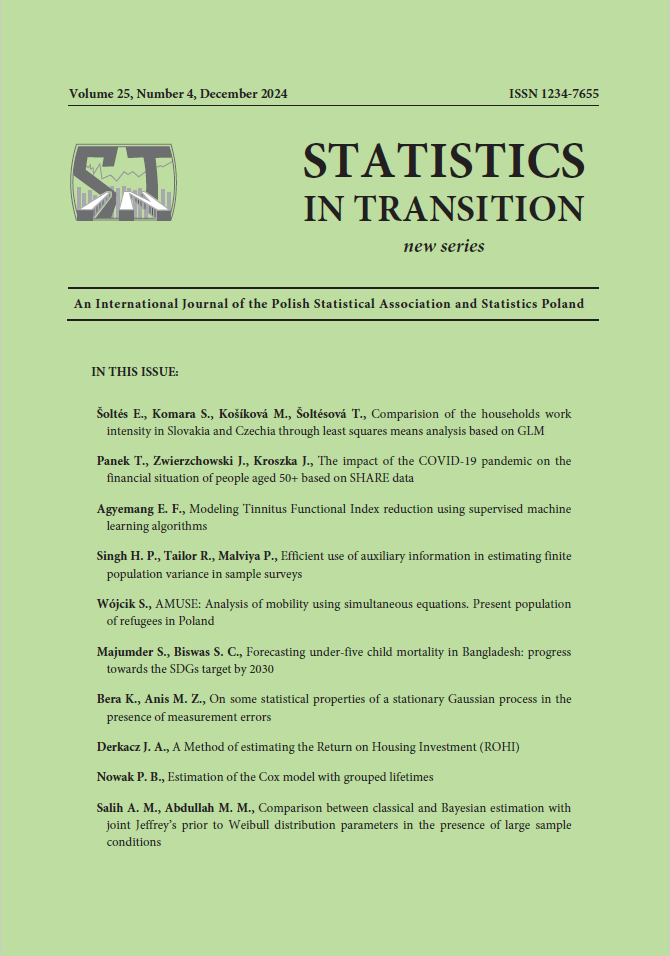ARTICLE
ABSTRACT
Weibull distribution has been considered one of the most common and valuable distributions for building and analyzing good models for lifetime data. Many researchers have studied the properties of Weibull distribution, also in search of the best method to estimate both parameters. In this paper, we proposed a comparison of Weibull distribution parameters under large sample conditions. We chose to study the classical estimation methods of Weibull distribution parameters, including the maximum likelihood estimator and moments estimation (ME). Next, we compared these methods with the Bayesian estimation method (BE) with Jeffrey’s prior function. We validated the proposed study via simulation using both small and large samples. We used mean square errors (MSE) to determine the best estimation method. Our simulation findings suggest that maximum likelihood estimators are reasonably effective when using small sample sizes. In addition, in cases where the sample size is larger, the BE performed more effectively for both scale and shape parameters of the Weibull distribution function.
KEYWORDS
Weibull distribution, classic estimation, Bayesian estimation, Jeffrey’s prior, large sample.
REFERENCES
Aslam, M., Kazmi, S., Ahmed, I. and Shah S., (2014). Bayesian Estimation for Parameters of the Weibull Distribution. Science International, Vol. 5, No. 1089 Lahore, Pakistan, pp. 1915–1920.
Berger, J. O., Sun D., (1993). Bayesian analysis for the poly-Weibull distribution. Journal of the American Statistical Association, Vol. 88, Issue 424, pp. 1412–1418.
Guure, C., Ibrahim, N. and Omari, M. Al., (2012). Bayesian Estimation of Two-Parameter Weibull Distribution Using Extension of Jeffreys’ Prior Information with Three loss Functions. Mathematical Problems in Engineering, Article Id 58940.
Johnson, N. L., Kotz, S. and Balakrishnan, N., (1994). Maximum Likelihood Estimation for Weibull Distribution, John Wiley & Sons, New York.
Kundu, D., (2008). Bayesian inference and life testing plan for Weibull distribution in the presence of progressive censoring. Technimetrics, Vol. 50, pp. 144–154.
Lawless, J. F., (2003). Statistical Models and Methods for Lifetime Data. 3ed. Edition, John Wiley and Sons, New York.
Mann, N., Schafer, R. and Singpurwalla, N., (1974). Methods of Statistical Analysis of Reliability and Life Data, John Wiley & Sons, New York.
Nwobi, F., Ugomma, C., (2014). A Comparison of Methods for the Estimation of Weibull Distribution Parameters. Metodoloski zvezki, Vol. 11, No.1, pp. 65–78.
Pobocikova, I., Sedliackova, Z., (2014). Comparison of Four Methods for Estimating the Weibull Distribution Parameters. App Math Sci, Vol. 8, No. 83, pp. 4137–4149.
Zhang, Y., Meeker, W. Q., (2005). Bayesian life testing planning for the Weibull distribution with given shape parameter. Metrika, Vol. 61, pp. 237–249.
